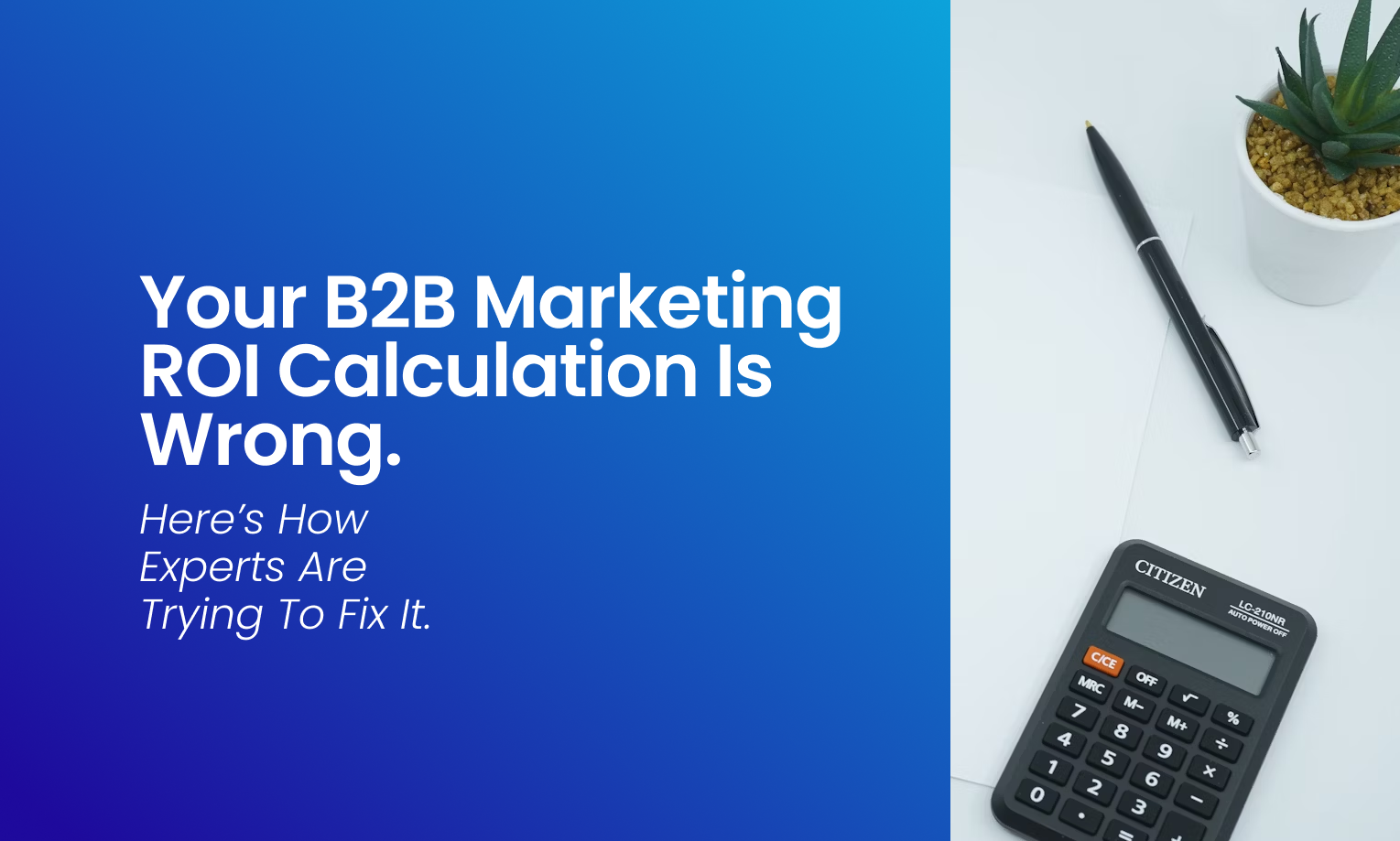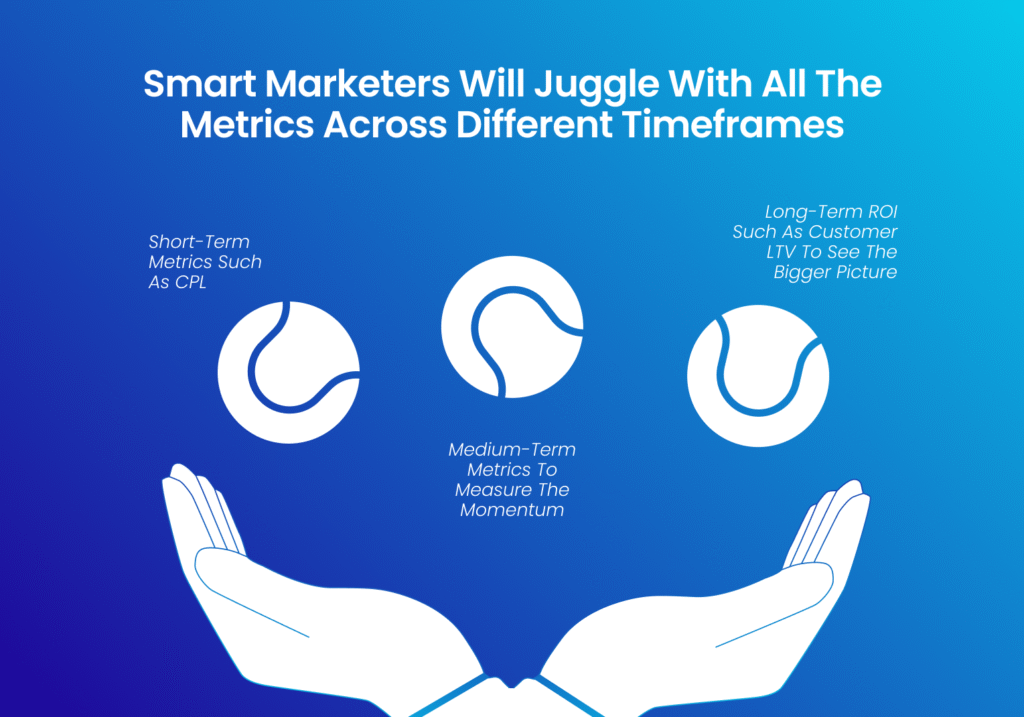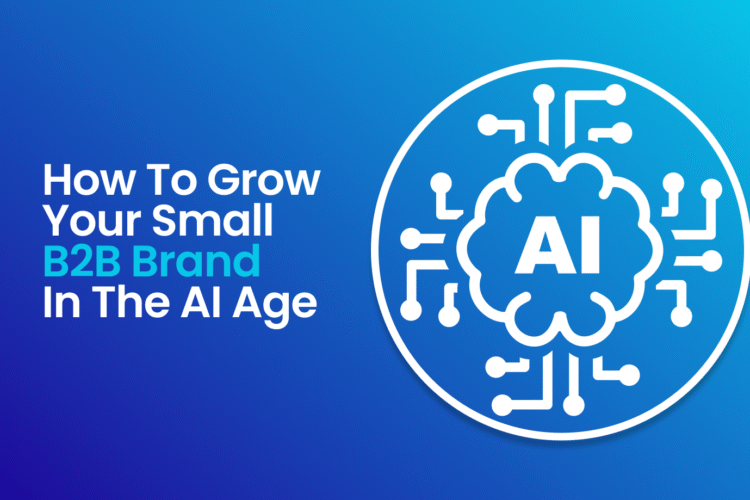
When I watched the amazing B2B marketing documentary “Everybody’s Business” last year, I became hopeful.
Hopeful about seeing more art and creativity in B2B marketing that we don’t talk about much.
Everybody’s Business is a short film by LinkedIn and the two-time Oscar-winning director Ben Proudfoot that presents the story of the evolution of B2B marketing.
🎬 Watch it here
And now with its new e-book “The Future of B2B Marketing Measurement”, LinkedIn is trying to bring more transparency to measuring the impact of B2B marketing on brand revenue.
I was amazed by LinkedIn’s innovative steps, so I decided to write this article. It’s high time we started thinking long-term about our B2B brand.
So, What’s Wrong With Our Current Methods of Measuring The Impact of B2B Marketing?
In B2B, we are so focused on getting quick sales or lead generation that we neglect the value brand marketing brings in the long term.
We’ve been obsessing over impressions, CTRs, CPLs, and CPA metrics — the stuff that looks great in dashboards but often fails to capture what truly moves the needle for your business.
It’s time to move beyond vanity metrics.
LinkedIn’s e-book “The Future of B2B Marketing Measurement” highlights how B2B marketing experts are trying to fix this broken model and steer toward a more holistic understanding of marketing impact.
Not just the ROI calculation, but the entire B2B marketing picture is changing for the better as well.
Also, read: 5 Exciting B2B Marketing Shifts LinkedIn Is Bringing to The Industry.
5 Shifts B2B Marketing Experts Are Making to Get It Right:
1. Drawing a Line Between Brand Engagement and Demand Generation

Not everything needs to be tied directly to lead gen.
Brand engagement builds memory, trust, and future demand. The smartest marketers measure both—but treat them as separate engines of growth.
2. Account-Based Awareness
Instead of spraying content to random audiences, marketers are zeroing in on high-value accounts and measuring awareness within those groups.
This way, you’re not just counting leads—you’re capturing influence among the right stakeholders.
3. Measuring Cross-Platform Impact
The customer journey is no longer linear—and your measurement system shouldn’t be either.
Modern B2B buyers engage across LinkedIn, email, webinars, search, and even offline channels.
Savvy marketers are using advanced attribution models to connect the dots across platforms and touchpoints.
4. Tracking Results Across Different Timeframes

Not every metric operates on the same schedule—and that’s okay.
Short-term numbers like CPL help with daily campaign optimizations.
Medium-term metrics such as pipeline value over a quarter show momentum.
And long-term ROI—factoring in customer lifetime value—guides strategic investment.
Smart marketers are learning to juggle all three timelines simultaneously, understanding that meaningful impact often unfolds over time.
5. Blending ROAS and ROI for a Fuller Picture
ROAS tells you how a specific platform or campaign is performing. ROI looks at your total marketing effort, including salaries and tools.
In practice, they’re deeply connected. Today’s marketers are building custom models that merge these views—helping them measure what truly matters across complex B2B sales cycles.
No single formula fits all. Your model should reflect your funnel, your sales journey, and your buyer’s behavior.
Why This Matters
Long-term brand equity isn’t built in a quarter. It’s built with consistency, creativity, and trust.
If we continue to judge B2B marketing only by short-term conversion rates, we’ll keep underestimating the true value it creates.
It’s time to zoom out and rethink how we measure success.
Because sometimes, the most meaningful impact of marketing doesn’t show up in a spreadsheet—until much later.
Let’s stop underestimating the power of a brand.
Let’s start building a marketing engine that respects both creativity and accountability.
If you’re in B2B, this isn’t just a shift in metrics.
It’s a shift in the mindset.


